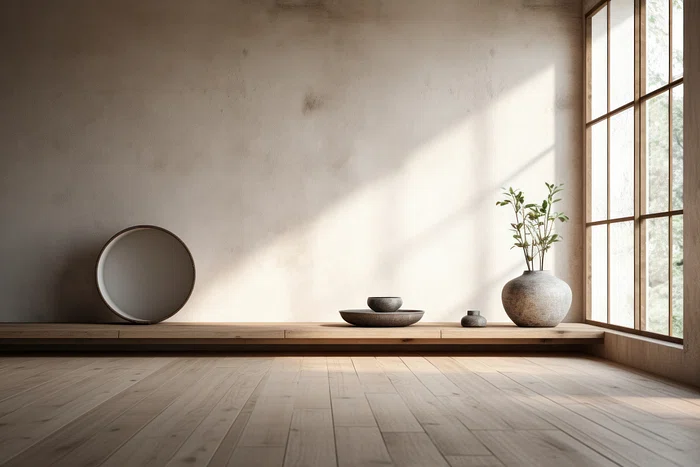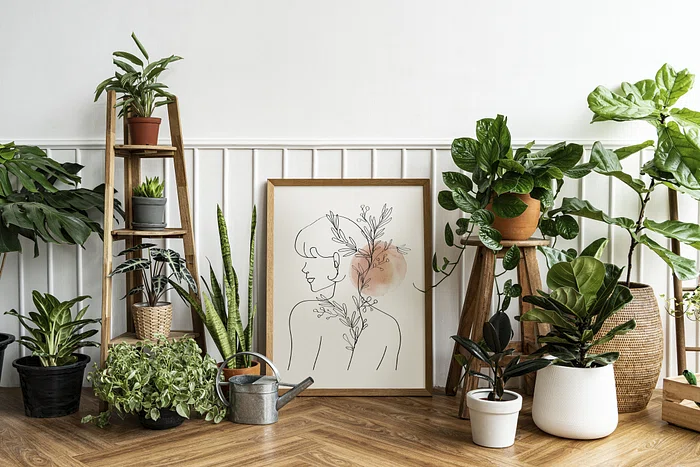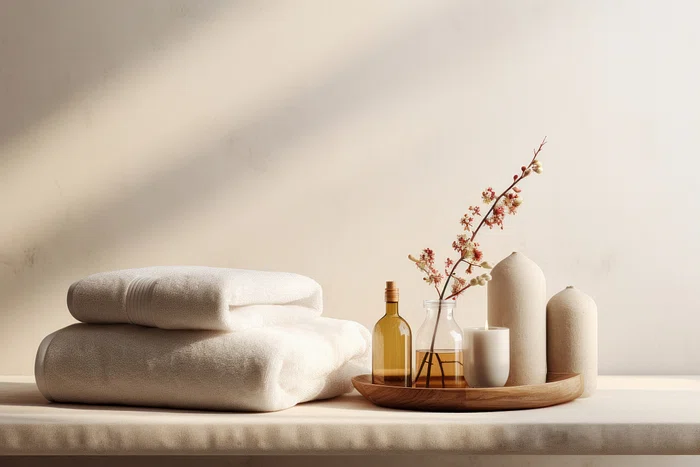In today’s fast-paced world, we often overlook the powerful connection between our living environment and our overall well-being. Welcome to Living Space Sacred Space: Boosting Your Health through Your Living Environment. In this transformative journey, we’ll explore the concept of a sacred living space, shedding light on its profound impact on both physical and mental health. Join us as we embark on a quest to unlock the secrets of harmonious living and discover how our homes can become sanctuaries of health and happiness.

The Power of a Sacred Living Space
A sacred living space is more than just a well-decorated room; it’s a sanctuary for your soul. In this section, we’ll delve into the very essence of this concept, defining what it means to have a sacred living space.
Throughout history and across various cultures, sacred spaces have held deep significance. We’ll explore these cultural and historical connections, unveiling the traditions and practices that have long recognized the importance of creating spaces imbued with meaning and purpose.
But why does it matter? What’s the connection between a sacred living space and our overall well-being? We’ll uncover the fascinating links between these spaces and our mental, emotional, and physical health. Prepare to be amazed at the potential of your living environment to positively impact your life.

The Mind-Body Connection
Your living space wields incredible influence over your mental and physical health. In this section, we’ll delve into the intricate relationship between your surroundings and your well-being.
First and foremost, we’ll explore the profound impact of your living environment on your mental health. From reducing stress and anxiety to enhancing mood and cognitive function, your sacred space plays a pivotal role in nurturing a sound mind.
But it doesn’t stop there. Your home has the power to affect your physical health too. We’ll uncover the ways in which a harmonious living space can promote better sleep, boost your immune system, and even contribute to longevity.
Intriguingly, we’ll connect the dots between your mental and physical well-being within the context of your home. You’ll gain a deeper understanding of how your sacred living space can create a holistic sense of health and wellness, where your mind and body thrive in harmony.

Decluttering for Health
The state of your living environment can significantly impact your overall health, and the clutter that accumulates in your home can be a hidden source of stress and unease. In this section, we’ll shed light on the adverse effects of clutter on both mental and physical well-being.
First, we’ll delve into how clutter can take a toll on your mental health. From increasing feelings of anxiety and overwhelm to hindering focus and productivity, a cluttered space can lead to a range of psychological challenges. We’ll draw upon real-life stories of individuals who’ve experienced these negative effects, highlighting the importance of decluttering for mental clarity.
Next, we’ll explore the physical health implications of a cluttered living space. Dust, allergens, and restricted movement due to clutter can contribute to respiratory issues and physical discomfort. Through research-backed insights and real-world examples, we’ll underline the vital role of decluttering in promoting physical health.
These strategies are designed to help you reclaim control over your environment, reduce stress, and create a more harmonious and health-promoting space.
The 3-Box Method: Start by placing three boxes or bins in your room—one for items to keep, one for items to donate or sell, and one for items to discard. Go through your possessions one by one and make decisions accordingly. This method helps categorize items quickly.
One-Room-at-a-Time Approach: Tackling your entire living space at once can be overwhelming. Begin with one room or even one area within a room. Once you’ve successfully decluttered that space, move on to the next. This gradual approach is less daunting and more manageable.
The KonMari Method: Made famous by Marie Kondo, this method encourages you to keep items that “spark joy” and let go of the rest. It’s a mindful way to declutter, focusing on the emotional connection to your possessions.
The 20/20 Rule: For items you’re unsure about, apply the 20/20 rule. If you can replace it for under $20 in 20 minutes or less, it’s probably not worth keeping. This rule helps prevent the accumulation of unnecessary items.
Digital Declutter: Don’t forget about your digital life. Organize and declutter your emails, files, and apps. Delete old photos and files you no longer need. A cluttered digital environment can also add to stress.
Clear Horizontal Surfaces: Start with surfaces like countertops and tables. Keep them as clear as possible. Horizontal spaces tend to collect clutter quickly. Use these surfaces for essential items only.
Regular Maintenance: Once you’ve decluttered, establish a routine for maintaining order. Spend a few minutes each day or week tidying up. Preventing clutter from returning is as important as decluttering in the first place.
The 12-12-12 Challenge: Find 12 items to throw away, 12 items to donate, and 12 items to be returned to their proper place. This exercise encourages you to look at your surroundings with a fresh perspective.
Seek Professional Help: If you’re overwhelmed by the clutter, consider hiring a professional organizer. They can provide guidance, motivation, and personalized strategies to declutter effectively.
Don’t Rush Decision-Making: When in doubt, set aside items you’re unsure about rather than rushing to toss them. Revisit these items after some time has passed. Often, you’ll find it easier to let go when you realize you haven’t missed them.
Remember, decluttering isn’t just about creating a tidy living space; it’s about improving your mental and physical health. By adopting these practices and finding a decluttering approach that suits you best, you can transform your environment into a more serene and health-promoting space.

The Healing Power of Nature
A. Benefits of Incorporating Natural Elements
Embracing natural elements in your living space can have profound effects on your well-being. Here are some benefits:
Stress Reduction: Natural elements like plants and water features have been shown to reduce stress levels. They create a calming ambiance that promotes relaxation.
Improved Air Quality: Houseplants act as natural air purifiers, removing toxins and releasing oxygen. Cleaner air leads to better health, including improved sleep and focus.
Enhanced Mood: Exposure to nature, even indoors, can boost mood and reduce feelings of anxiety and depression. Natural elements provide a connection to the outdoors.
B. Bringing Nature Indoors
Houseplants: Incorporating indoor plants is one of the easiest ways to introduce nature into your living space. Consider low-maintenance options like snake plants, pothos, or succulents. They not only add greenery but also purify the air.
Natural Materials: Opt for furniture and decor made from natural materials like wood, bamboo, or stone. These materials create a tactile connection to nature and lend a sense of authenticity to your space.
Natural Light: Maximize natural light by using sheer curtains or blinds that allow sunlight to filter in. Natural light not only makes your space feel more inviting but also supports your circadian rhythm and sleep patterns.
Biophilic Design: Consider a biophilic design approach, which incorporates natural elements seamlessly into architecture. This might involve large windows, living walls, or water features.
Nature-Inspired Art: Hang artwork or photographs that depict natural scenes or wildlife. These pieces can evoke feelings of calm and connection to the outdoors.
C. Psychological Impact of a Nature-Inspired Living Environment
Creating a nature-inspired living environment can have a significant psychological impact:
Reduced Stress: Natural elements promote relaxation and can reduce stress levels. They provide a sense of tranquility that helps you unwind after a long day.
Enhanced Creativity: Exposure to nature indoors can boost creativity. It can inspire fresh ideas and a sense of rejuvenation.
Connection to the Outdoors: Even if you live in an urban environment, a nature-inspired living space fosters a connection to the natural world. This can improve overall well-being and mental health.
Improved Focus: A space with natural elements can enhance concentration and focus. This is particularly beneficial for work or study areas.
Incorporating the healing power of nature into your living space not only enhances the aesthetics but also contributes to your physical and mental health. By introducing natural elements, you can create a harmonious environment that promotes relaxation, creativity, and overall well-being.

Feng Shui and Holistic Design
A. Introducing Feng Shui and Holistic Design
Feng Shui and holistic design are ancient practices that emphasize the connection between the living environment and one’s physical and emotional well-being. These approaches view the living space as a reflection of your inner self and aim to create harmony, balance, and positive energy.
Feng Shui, pronounced “fung shway,” is an ancient Chinese art and science that dates back over 3,000 years. Its roots can be traced to the Zhou dynasty (1046–256 BCE), although some aspects of it may have existed even earlier. The term “Feng Shui” translates to “wind-water” in English, and it encompasses a wide range of principles and practices aimed at harmonizing individuals with their environment to promote health, prosperity, and well-being.
Feng Shui-Historical Origins:
Early Beginnings: Feng Shui’s origins lie in ancient Chinese observations of the natural world. Early practitioners noticed how the landscape, including mountains, rivers, and other geographical features, affected people’s lives and well-being. They believed that understanding and harnessing these natural forces could bring good fortune.
Geomancy and Yin-Yang: Feng Shui evolved from the ancient practice of geomancy, which involved assessing the Earth’s energy (Qi) and how it flowed through a particular location. The concepts of Yin and Yang, representing opposing but complementary forces, are fundamental to Feng Shui. Balancing these forces is central to achieving harmony in one’s surroundings.
Development and Influences:
I Ching (Yijing): The I Ching, or Book of Changes, played a significant role in the development of Feng Shui. This ancient Chinese divination text explored the idea of balance, change, and the interconnectedness of all things. It became a foundational text for Feng Shui practitioners.
Cosmic Trinity: Feng Shui practitioners began to recognize three cosmic entities that influenced their surroundings: heaven, Earth, and humanity. Each of these elements had its own specific energies, and aligning them correctly became a key aspect of Feng Shui practice.
Chinese Emperors: Feng Shui gained royal recognition during various Chinese dynasties. Emperors believed that properly aligned palaces and cities would ensure their prosperity and longevity. As a result, Feng Shui consultants played essential roles in the design and layout of imperial residences and cities.
Traditional Schools:
Over time, different schools of Feng Shui emerged, each with its interpretations and methods. Two of the most prominent schools are:
Compass School (Li-Qi): This school uses a Luopan (a Feng Shui compass) to determine the direction and energy flow of a location. It is often associated with the use of the Bagua map, which divides spaces into eight areas, each representing different life aspects.
Form School (Xing-Xiang): Form School Feng Shui focuses on the physical characteristics of a location, such as the arrangement of objects, landforms, and buildings. It emphasizes the flow of Qi through the landscape and space.
Modern Adaptations:
In contemporary times, Feng Shui has not only maintained its popularity but has also spread globally. It’s often used in interior design, architecture, and urban planning. While some practitioners adhere strictly to traditional principles, others have adapted Feng Shui to modern lifestyles and environments.
Feng Shui continues to influence how people arrange their homes and workplaces to promote harmony, health, and prosperity. Its enduring appeal lies in its holistic approach to living in harmony with nature and the belief that our surroundings profoundly affect our lives.
B. Creating a Balanced and Harmonious Living Space
Feng Shui Principles: Feng Shui is based on principles that guide the arrangement of objects and furniture to optimize the flow of energy or “Chi.” By aligning your living space with these principles, you can achieve:
Balanced Energy: Feng Shui helps balance the energy in your home, preventing stagnation or excessive activity.
Harmonious Arrangements: It promotes the placement of furniture and decor in a way that fosters harmony and a sense of well-being.
Positive Vibes: Proper Feng Shui can enhance positivity and reduce negativity within your living space.
Holistic Design: Holistic design takes into account the physical, emotional, and spiritual aspects of a living space. It encourages:
Sustainability: Using environmentally friendly materials and practices that support overall well-being.
Natural Light and Ventilation: Prioritizing access to natural light and fresh air, which are essential for health and vitality.
Emotional Connection: Incorporating elements that resonate with your emotions and values, fostering a sense of belonging and connection.
C. Practical Tips for Applying Feng Shui and Holistic Design
Declutter with Purpose: Both Feng Shui and holistic design stress the importance of decluttering. Clearing out unnecessary items allows energy to flow freely and creates a sense of spaciousness.
Balance Elements: In Feng Shui, there are five elements—wood, fire, earth, metal, and water. Ensure a balanced representation of these elements in your decor and color choices.
Room Layout: Consider the flow of energy and how rooms connect with each other. Arrange furniture and decor to allow for easy movement and a sense of openness.
Natural Materials: Use natural materials like wood, stone, or bamboo for furniture and decor. These materials create a tactile connection to nature and contribute to a sense of balance.
Incorporate Plants: Indoor plants not only improve air quality but also symbolize growth and vitality. They align with both Feng Shui and holistic design principles.
Mindful Lighting: Opt for lighting solutions that create a warm and inviting atmosphere. Pay attention to the intensity and color of light in different areas of your living space.
By embracing Feng Shui and holistic design principles, you can transform your living space into a sanctuary that supports your overall well-being. These practices encourage a balanced and harmonious environment where positive energy flows freely, promoting physical and mental health.

Lighting, Color, and Mood
The Influence of Lighting and Color:
The lighting and color scheme of a living space can significantly impact our mental and emotional well-being. Adequate lighting and well-chosen colors can create an atmosphere that fosters positivity, relaxation, and comfort.
Guidance for Mood Enhancement:
Selecting the right lighting and color schemes is crucial for promoting a positive mood. Warm, soft lighting can create a cozy ambiance, while cool, bright lighting can invigorate a space. Similarly, colors play a vital role. For example, calming blues and greens can induce a sense of tranquility, while vibrant yellows and oranges can energize and uplift.
Influencer Examples:
Oprah Winfrey: The influential media mogul and philanthropist, Oprah Winfrey, has often emphasized the importance of creating a positive living environment. She shared how she transformed her home by using soothing pastel colors and strategically placed natural light sources. Oprah believes that her living space contributes to her overall sense of well-being.
Ellen DeGeneres: The beloved TV host and comedian Ellen DeGeneres is known for her passion for interior design. She once mentioned in an interview how she renovated her living space to include large windows that let in plenty of natural light. Ellen believes that the abundant daylight in her home positively impacts her mood and energy levels.
Marie Kondo: The renowned organization expert Marie Kondo emphasizes the significance of decluttering and creating a harmonious living space. She often speaks about the importance of choosing colors and decor that “spark joy.” Marie’s minimalist approach to design and her use of serene, nature-inspired colors contribute to the calm and balanced atmosphere of her home.
Bobby Berk: As the interior design expert on the popular show “Queer Eye,” Bobby Berk knows the transformative power of lighting and color. He has shared his insights on using warm, dimmable lighting and earthy, neutral tones to create inviting and cozy living spaces for his clients. Bobby believes that these design elements play a crucial role in fostering a sense of home and well-being.
These celebrity influencers have harnessed the principles of lighting and color to enhance their living spaces and, in turn, their overall mood and quality of life. Their examples highlight how intentional choices in lighting and color can make a significant difference in creating a sacred and emotionally uplifting environment.
Transforming Your Living Space
Step-by-Step Guide:
Transforming a regular living space into a sacred one doesn’t have to be overwhelming. We’ll provide readers with a practical, step-by-step guide that breaks down the process into manageable tasks. From decluttering to incorporating nature-inspired elements, we’ll offer a roadmap for creating a harmonious environment that promotes well-being.
Budget-Friendly and DIY Suggestions:
Not everyone has a massive budget for home renovations, and that’s okay. We’ll share budget-friendly ideas and DIY projects that readers can easily implement. Whether it’s repurposing furniture, adding potted plants, or rearranging existing decor, we’ll show how small changes can make a big impact.
Personalization and Creativity:
One of the joys of transforming your living space is the opportunity for personalization and creativity. We’ll emphasize the importance of infusing your unique style and personality into the design. Readers will discover how to choose elements that resonate with them, whether it’s artwork, textiles, or sentimental objects. We’ll encourage them to view their living space as a canvas for self-expression and healing.
By following this guide, readers can embark on a transformative journey to turn their living space into a sacred haven that nurtures their physical and mental health, all while staying within their budget and infusing their personality into the design.
Maintenance and Long-Term Benefits: Nurturing the Ongoing Journey
Your sacred living space isn’t just a static backdrop to your life; it’s a living, breathing entity that evolves alongside you. Much like your personal well-being, the care and attention you invest in your living environment are part of an ongoing journey. In this section, we will delve into the importance of regular maintenance, the lasting benefits it brings, and how to adapt your sacred space to the changing tides of life.
Importance of Regular Maintenance:
Maintaining your sacred living space isn’t solely about cleanliness or organization; it’s about the energy and atmosphere you cultivate within it. Regular maintenance rituals are like acts of love for your space. They encompass not only physical cleanliness but also emotional and energetic cleansing. We will discuss practical routines and mindful practices that can purify your space, ensuring it remains a sanctuary of positivity and well-being.
Long-Term Health Benefits:
Creating a sacred space isn’t a one-time endeavor; it’s a lifelong investment in your health and happiness. As time unfolds, you can expect an array of enduring health benefits. Reduced stress, improved quality of sleep, heightened mental clarity, and a sense of emotional equilibrium are just a few of the remarkable long-term advantages. Real-life stories of individuals who have nurtured their living spaces and, in turn, reaped these long-term rewards will inspire you on your journey.
Tips for Ongoing Care and Adaptation:
Life is ever-changing, and so are your needs. As you grow and your circumstances evolve, your sacred living space should evolve with you. We will provide you with practical tips and strategies for adapting your space to align with your shifting life stages. Whether you’re accommodating shifts in family dynamics, adapting to new career demands, or embarking on personal growth, we will guide you on preserving the sanctity of your space while ensuring it remains a reflection of your evolving needs and aspirations.
In this section, we empower you to not only create a sacred living space but also to embark on a lifelong journey of well-being. This journey is sustained by the care and love you invest in your living environment, where your space nurtures you just as you nurture it. It’s a journey where your surroundings become an integral part of your holistic health, fostering a profound sense of harmony and happiness.

Nurturing Your Sacred Living Space for Health and Harmony
In this exploration of creating a sacred living space, we’ve journeyed through the profound influence that our environment wields on our physical and mental well-being. We’ve uncovered the transformative power of decluttering, the soothing embrace of nature, and the holistic principles that can harmonize our living spaces. Throughout this journey, we’ve learned that the relationship between our living environment and our health is not just a superficial one; it’s deeply intertwined.
Summarizing Key Takeaways:
We’ve seen that decluttering, far from being a mere tidying-up task, is a gateway to mental clarity and inner peace. The stories of individuals who have successfully decluttered their lives and found solace amidst simplicity serve as vivid testaments to the power of a clutter-free existence.
The Profound Influence:
Our exploration into the benefits of incorporating nature into our living spaces has illuminated the therapeutic qualities of the natural world. From the calming presence of houseplants to the grounding influence of natural materials, we’ve discovered that even in the heart of urban living, we can find solace in nature’s embrace.
Encouragement for the Journey:
As we conclude, I encourage you to embark on your unique journey of crafting a sacred living space. Whether you choose to declutter, bring a touch of nature indoors, or dive into holistic design, remember that this journey is yours to shape. Your living space can be a sanctuary, a source of inspiration, and a reflection of your well-being.
With each intentional step you take, you are not merely transforming your living environment; you are transforming your life. By nurturing your sacred living space, you are nurturing your health and fostering harmony in your everyday existence.
So, with renewed inspiration, go forth and create a living space that resonates with your essence, uplifts your spirit, and supports your well-being. Your sacred space is waiting to embrace you on this extraordinary journey of health and harmony.
Related posts
1 Comment
Leave a Reply Cancel reply
the art of doing your best
-Baba

helloI love your writing incredibly much share we keep up a correspondence extra about your article on AOL I need an expert in this house to solve my problem May be that is you Taking a look forward to see you